Battery Pack, 4P6S, ANSYS Fluent CFD Simulation
$180.00 $90.00 Student Discount
- This product numerically simulates the 4S6P Battery Pack using ANSYS Fluent software.
- We design the 3-D model with the Design Modeler software.
- We mesh the model with ANSYS Meshing software, the element numbers are 499001.
- We use the MSMD (Multi-Scale Multi-Domain) Battery model to define the charge/discharge.
- We use the ECM (Equivalent Circuit Model) sub-model to determine the electrochemical computations.
- The run calculation is in an unsteady state (transient).
To Order Your Project or benefit from a CFD consultation, contact our experts via email (info@mr-cfd.com), online support tab, or WhatsApp at +44 7443 197273.
There are some Free Products to check our service quality.
If you want the training video in another language instead of English, ask it via info@mr-cfd.com after you buy the product.
Description
Description
In this project, we present the CFD simulation of the battery pack (4P6S) in ANSYS Fluent software.
A battery is a device that converts chemical energy into electric energy through chemical reactions if needed. The main zone of a battery is the active cell, where electrochemical reactions occur. The passive zones include a battery’s positive and negative tabs (terminals) for electric conductivity.
Batteries are exposed to charge and discharge during operation. The electric current is supplied by an external source, during charging. However, an electric load consumes the electric current during discharging.
In Fluent, we can model a single battery or a battery pack. A battery pack is a combination of individual cells connected in parallel or serial for the desired operating voltage and current.
In a parallel configuration, the battery tabs are connected through the same name (positive terminal to the next positive terminal and negative terminal to the next negative terminal). However, in a serial configuration, the battery tabs are connected through the non-same tabs (the positive terminal to the negative terminal and vice versa).
In this project, we simulated 24 cylindrical batteries in series and parallel connections as a battery pack. Our battery pack consists of 6 battery series stages and 4 batteries in parallel per series stage. So, we call the 4P6S battery pack.
Methodology
First, we modeled the battery pack geometry in Design Modeler software. Each cylindrical battery consists of a cell zone with positive and negative tab zones. In this battery pack, the terminals of each battery are connected by busbars.
Then, we meshed the model using ANSYS Meshing software, and 499001 elements were generated.
Finally, we simulated this battery pack using the Battery model in ANSYS Fluent software.
In this project, we used the Multi-Scale Multi-Domain (MSMD) model for battery modeling. The MSMD is a comprehensive method for modeling lithium-ion batteries; because it involves a multi-scale and multi-physic nature.
Then, we used the ECM (Equivalent Circuit Model) sub-model to specify the electrochemical computations. The ECM model is considered a semi-empirical method for electrochemical formulation.
In this project, we intend to discharge the battery pack at a 5 C rate. For each cell battery, we assume the nominal capacity is 14.6 A.h and the voltage range is 3 v to 4.3 v.
Since the charging/discharging process in the battery system occurs over time, we run the calculation in an unsteady state (transient).
Conclusion
We intend to analyze the battery pack behavior during the discharging process. Therefore, we provided the plot of potential (voltage) variations and maximum temperature variations over time.
The results show that when the battery pack is discharging, its overall voltage decreases. On the other hand, due to the battery pack operation, heat is generated and the surface temperature of individual batteries increases.
Then, we obtained the contours of temperature, cell voltage, and SOC (state of charge) at different times. These contours confirm the plots of potential and temperature.
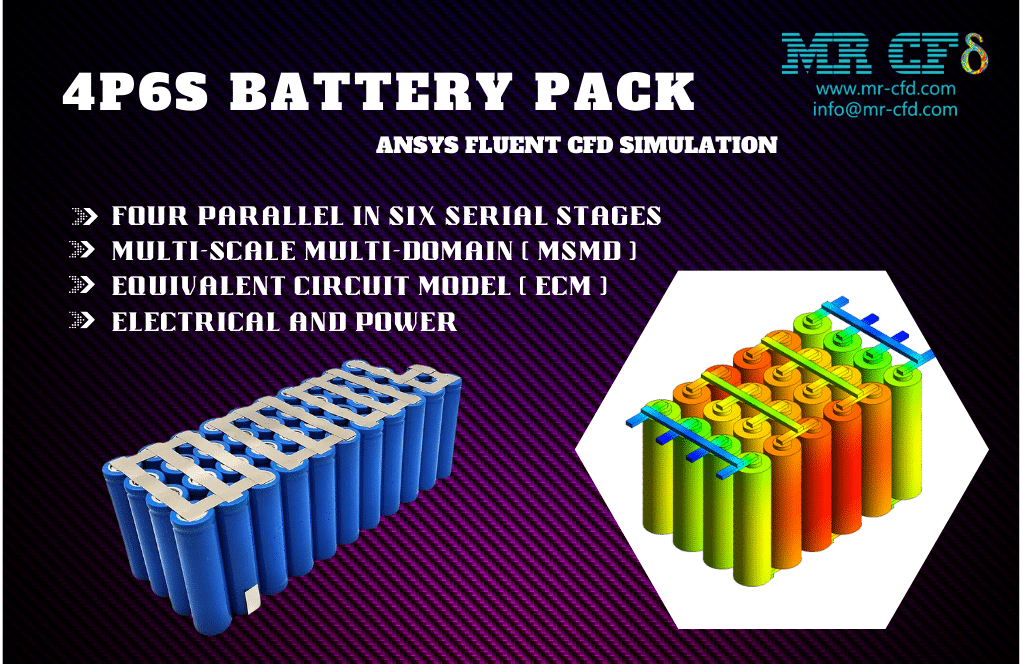
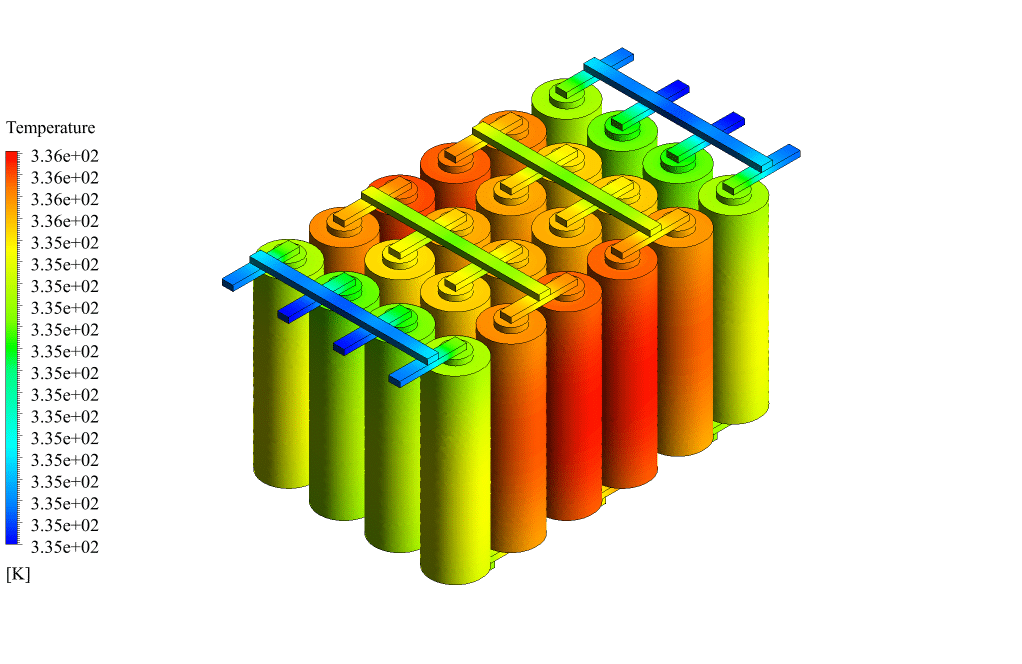
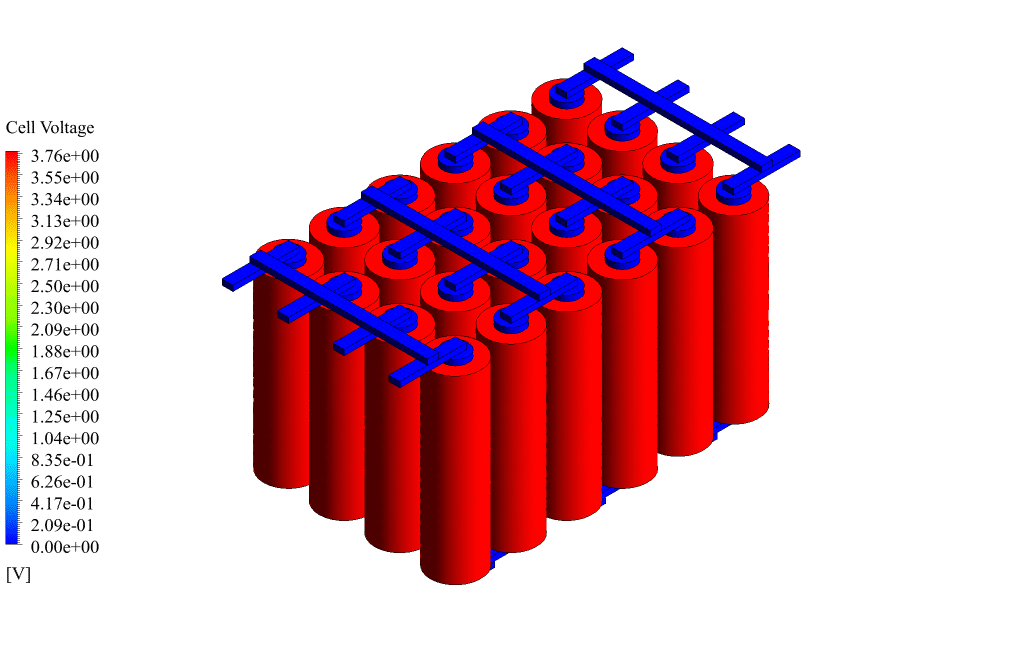
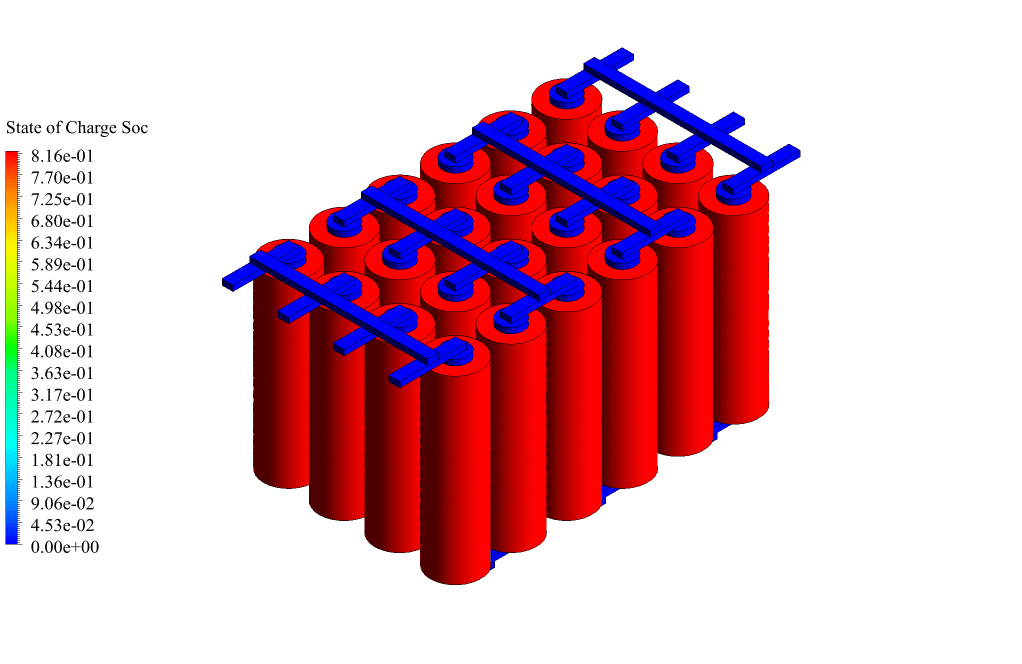
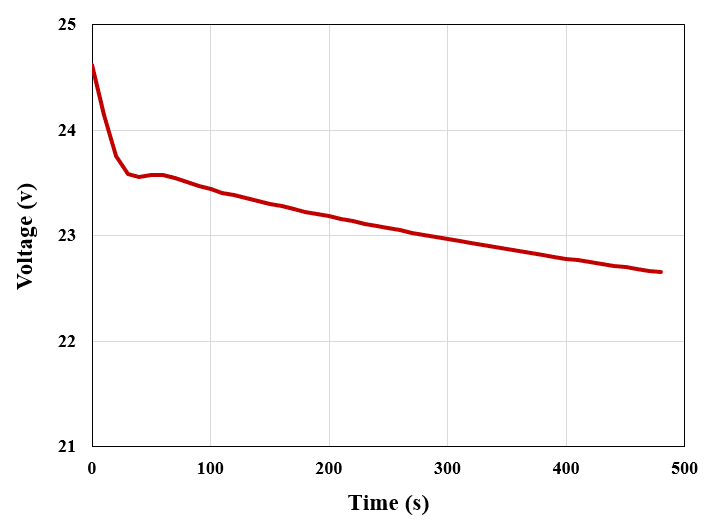
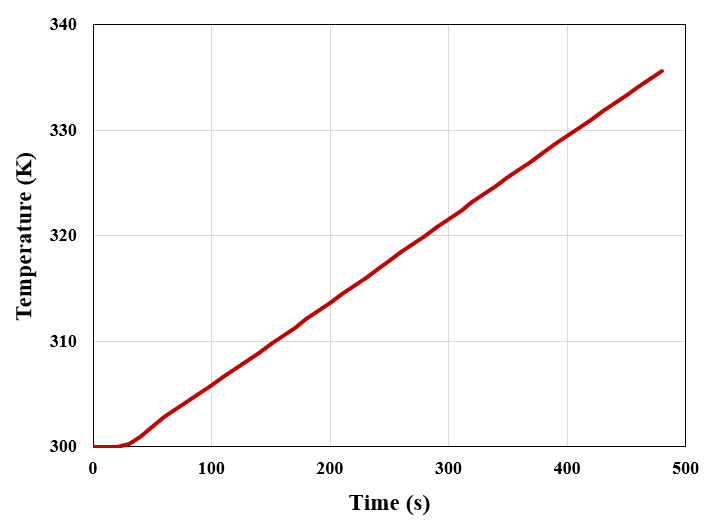
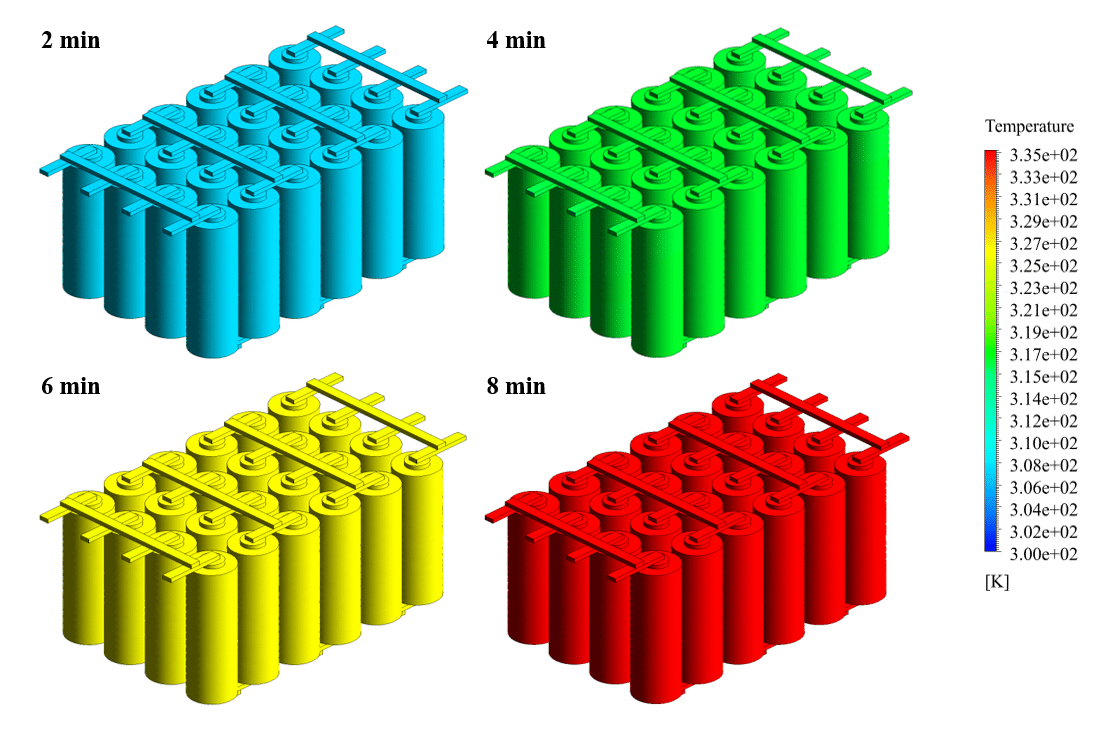
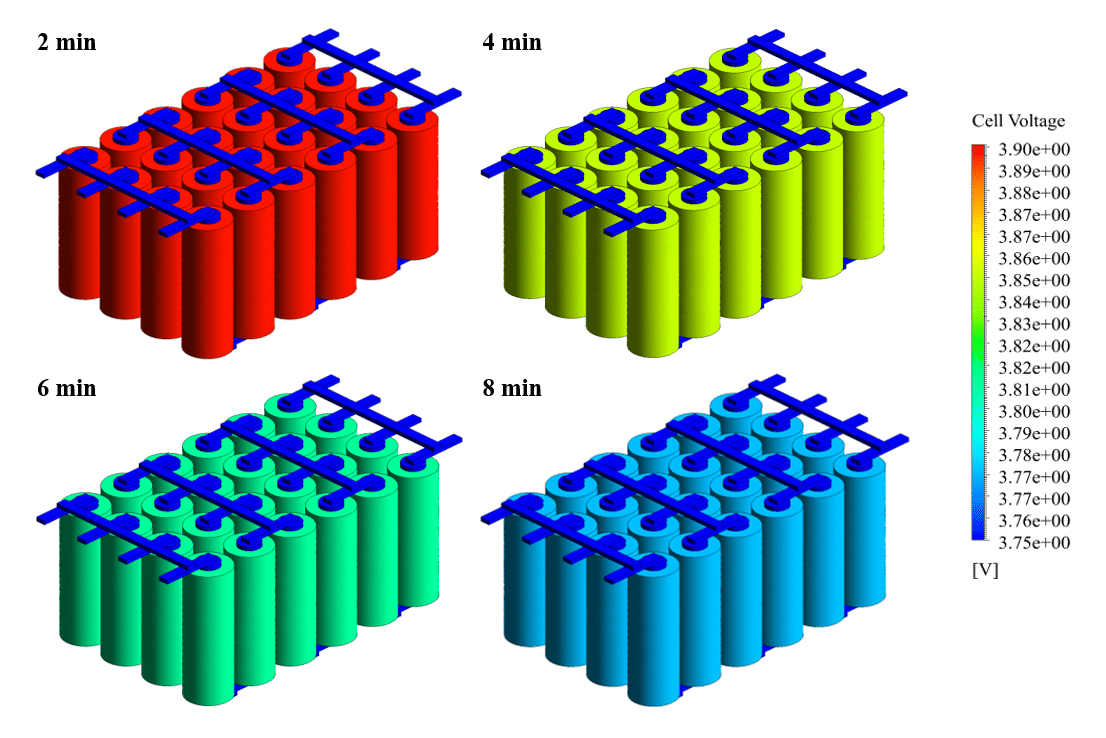
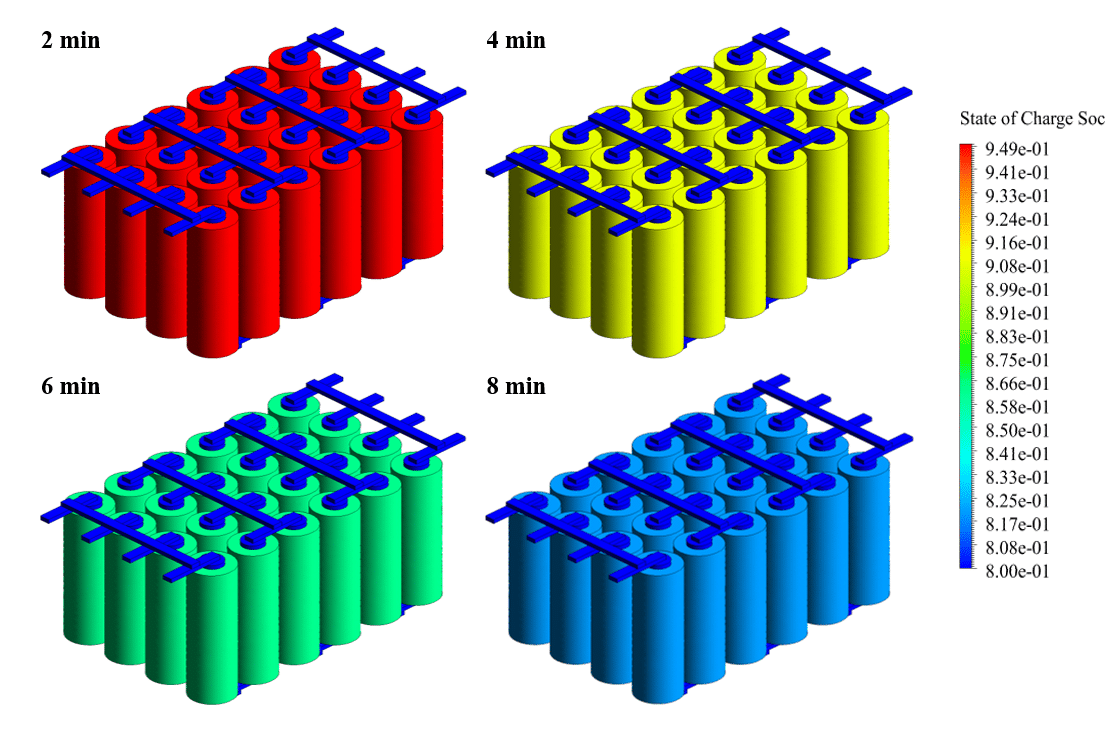
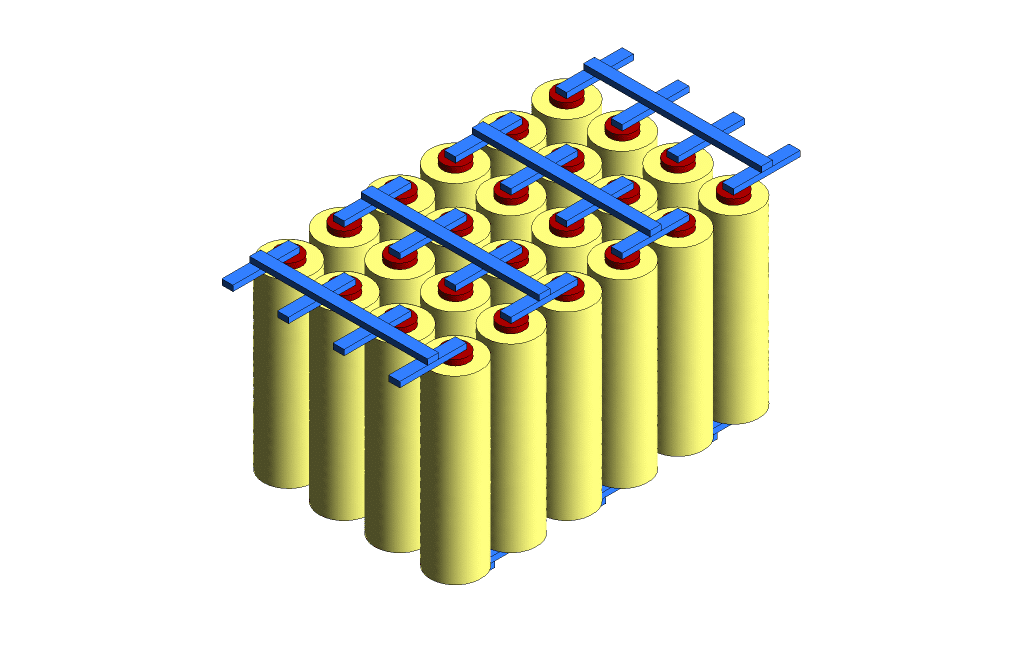
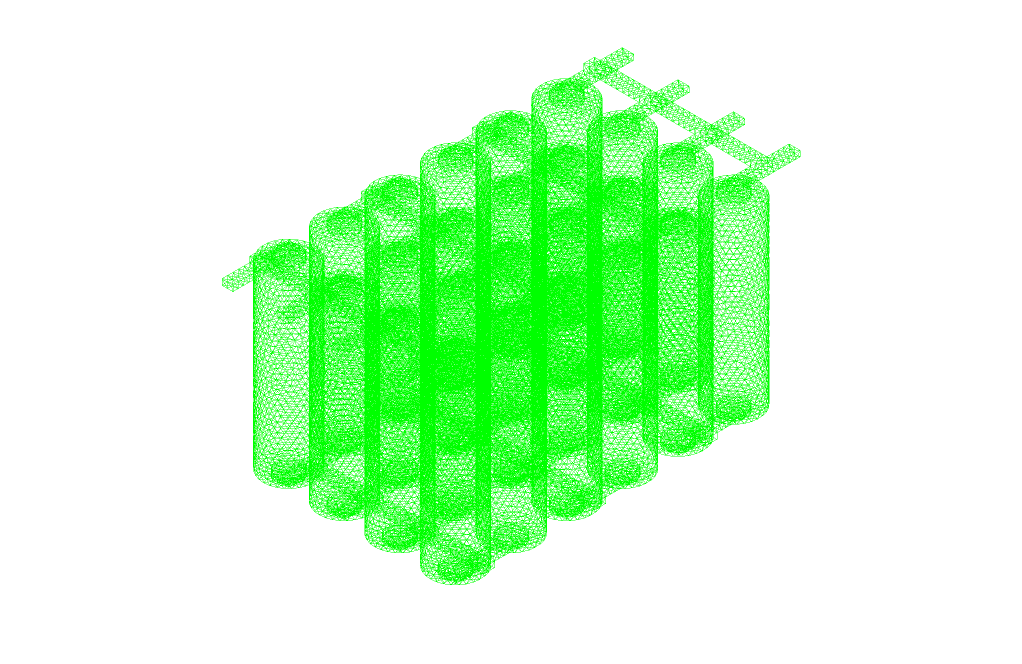


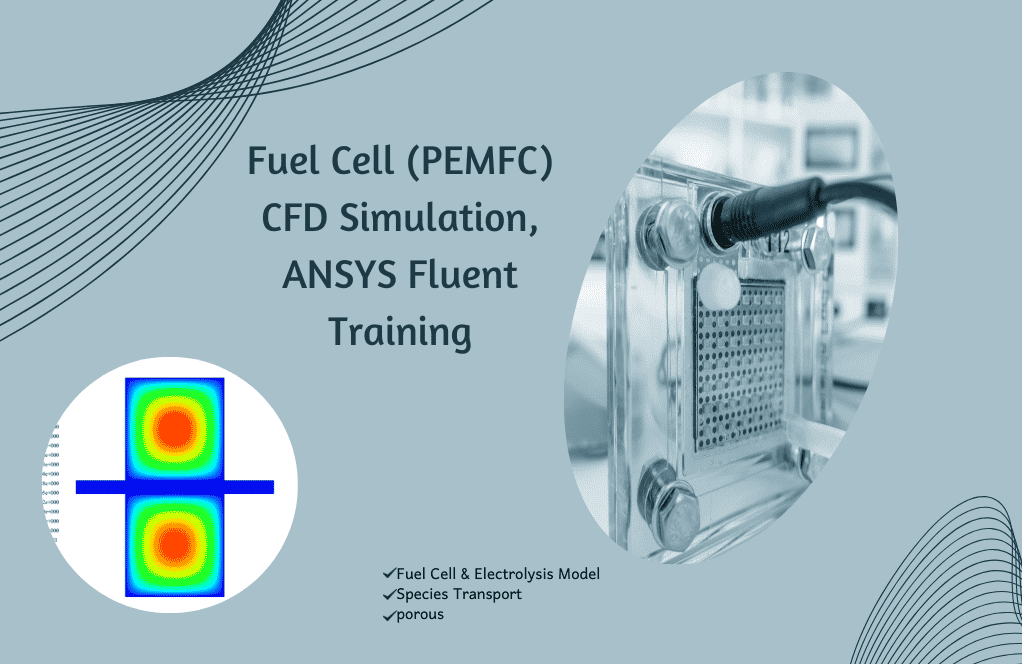
Reviews
There are no reviews yet.